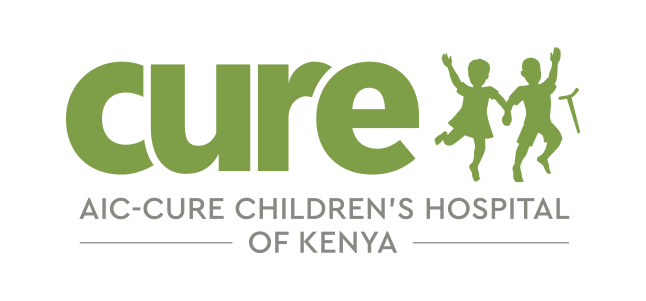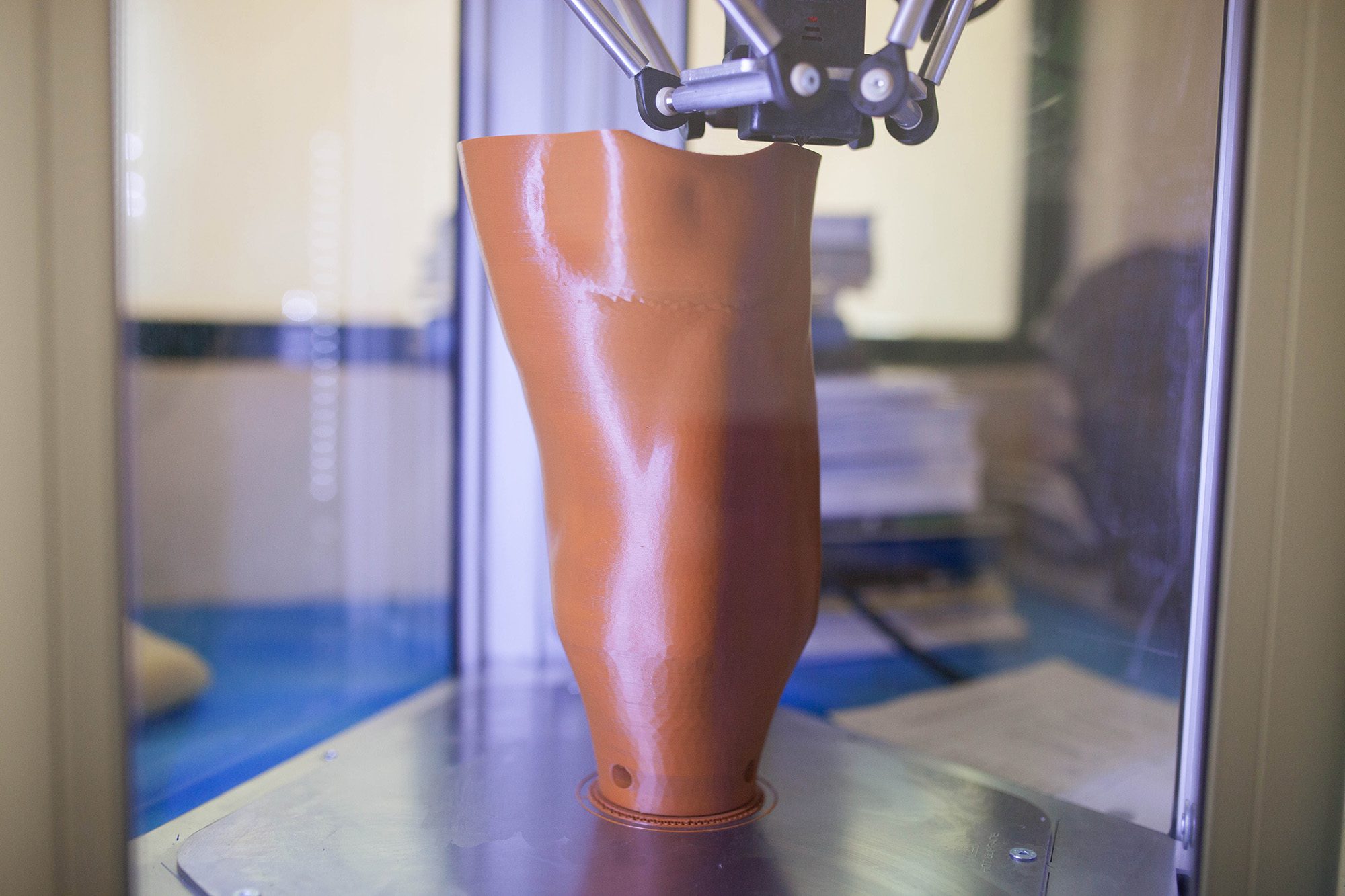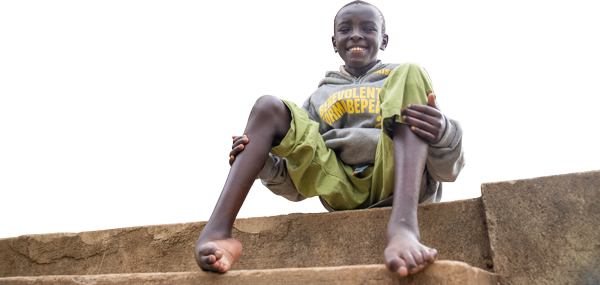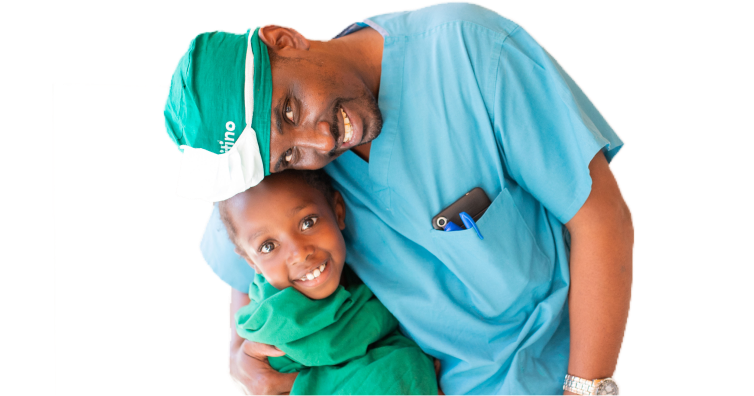“I know if it works, it will be a huge relief for us,” said Simon, Orthopedic Workshop Manager.
This past year, CURE purchased a 3-D printer with the help of Messiah College in Pennsylvania. Along with reducing the cost of the printer and donating some software that was needed to help run it, they also sent a team of students and faculty to train our staff on how to use the printer!
Now, you might be thinking: Umm, a 3-D printer? What could CURE possibly do with one of those?

The idea of 3-D printing does seem a bit obscure and unknown. But recently, we had the privilege of sitting down with Dan, one of the team members from Messiah College. Dan majored in biomedical engineering. Dan was able to help us understand more about the printer.
“Basically, it works like a regular printer, but it also has a Z axis (along with the normal X and Y axis), so it can print up and down, too. It works like a glue gun. The material (plastic filament) comes through a hot tip and builds upon itself, layer by layer. It bonds to itself,” he explained.

While the team visited, they began test printing leg sockets for prosthetics (the rest is still assembled manually). From our experience and what Dan explained to us, here is the basic print process.
- Scan the person’s leg with the portable scanner.
- Fabricate the socket from the scan in certain software.
- Attach the socket adapter in another software program.
- Send to the slicing software to modify print settings.
- Put the ready image on an SD card which is inserted into the printer.
- Then, the image is selected and the printer goes to work printing the socket.
It should take an hour and a half or less to prep the scan before it is sent to print. Dan said the average length of time it takes for something to print is 25 hours for an adult and 12.5 hours for a child.
Before our sit down with Dan, we also had the chance to talk to Simon who heads the Ortho Department at CURE Kenya. We asked him how the printer will change things for our co-workers.

“Let me say two things: first, the cost effectivness. It’s going to knock off the cost… Second, it will knock off the time it takes to make the prosthetics.”
With the manual way of measuring prosthetics, CURE had to take a negative cast and create the socket a very different way. We would ask patients to return after two weeks to be fitted for a prosthetic. With the new 3-D printer, our technicians can scan the patient, prepare the scan, and print the socket overnight. They could even ask the patient to come back the next day for a fitting!

Another benefit that Simon told us about has to do with the accuracy of printing.
“The margin of error will be reduced. We use measuring tape, and we have to use what you call the ‘orthopedic eye.’” The orthopedic eye refers to an orthopedic technologist’s judgment used during the measuring process. As fantastic as our team is, it is just the nature of things that the margin of error is higher when one measures manually.
The 3-D scanner used to take the measurements is also portable! This means that it will be possible to take it on our mobile clinics and take a patient’s measurements there. At this time, we only measure about six to ten patients every month for prosthetics, so taking the scanner on mobile clinics sometimes and away from the workshop won’t be too big of a deal.

And, if all of that isn’t enough, get this: the cost of 3-D printing is considerably cheaper than making prosthetics manually. For one thing, there is no longer a need to import polyurethane sheets to wrap over the plaster impression to create a “positive cast.” The total cost for the plastic filament used to 3-D print one socket is 750 shillings. The old cost is 15,000 shillings. This basically translates to $7.50 vs. $150! One thing to consider is that in the old sockets, a soft insert was put into the bigger socket for comfort’s sake. The new sockets do not have this. CURE may have to consider putting a soft socket inside the 3-D printed one. This will raise the cost, but the price will probably still only be half of what it used to be.
If all goes well, the impact on our patients will be significant. Because production costs are less, this means that we will be able to help more people receive prosthetics. It will save us time and our patients’ time in receiving their prosthetics. And, eventually, we’ll be able to make other things like orthotics and hand prosthetics. The prosthetics will look better, too!
You can pray with us that this will all work. We’re thankful for this opportunity to serve our patients better. Above all else, we hope that God gets the glory in this!


About AIC-CURE Children’s Hospital of Kenya
CURE Kenya has been a place of hope since opening its doors in 1998. We were Africa’s first orthopedic teaching hospital when it opened in Kijabe. More than just providing life-changing surgeries, CURE cares for the emotional and spiritual needs of all our patients. Our teaching hospital has 47 beds, four operating rooms, and an outpatient clinic.




